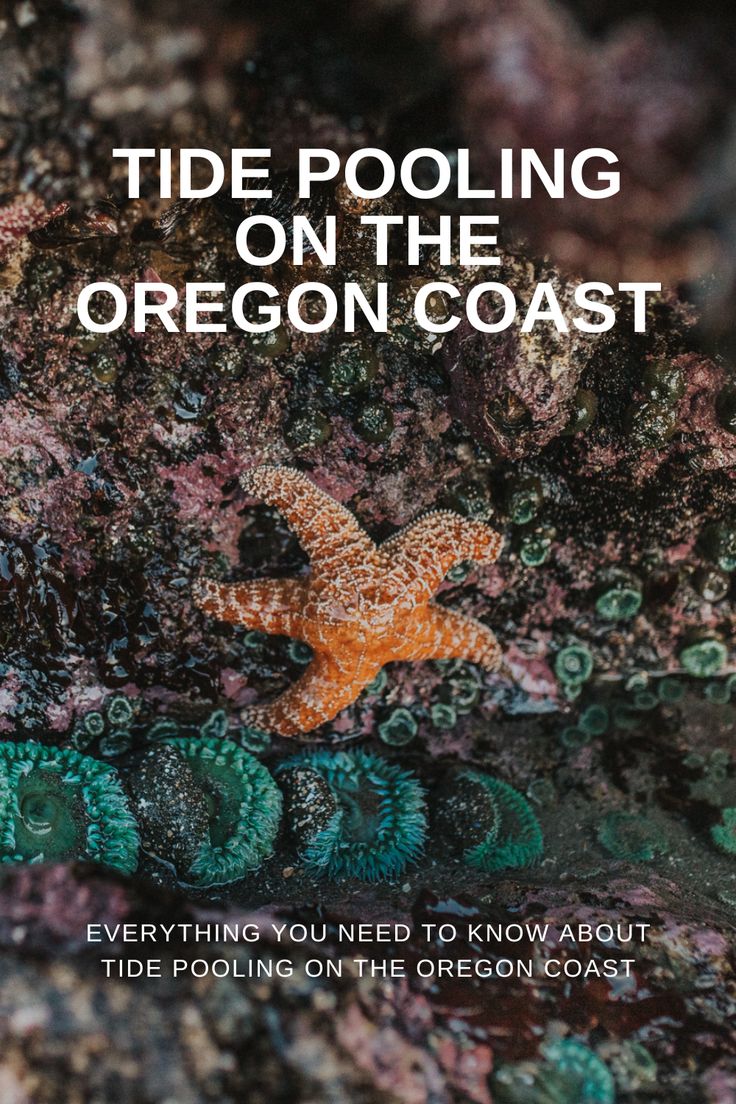May 25, 2023
Everything You Need to Know About Tide Pooling on the Oregon Coast
How to find the best tide pools, what tides are good for tide pools, what animals you’re seeing, and so much more about tide pooling from an Oregon Coast local.
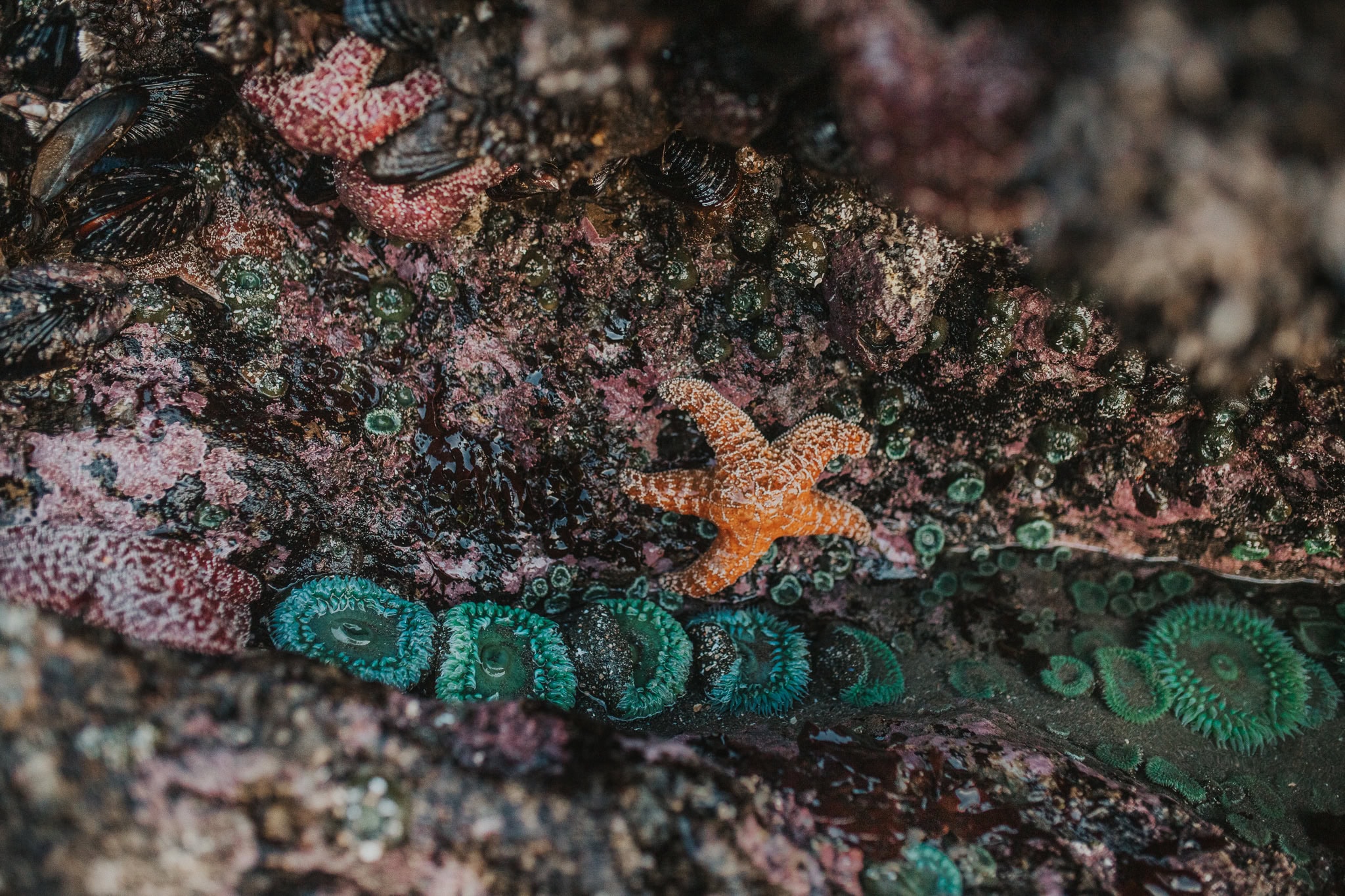
I’m like really into tide pooling. I always struggle on how to convey that to people in casual conversations or when I try to explain tide pool things to a fellow beach goer. While my main credential is an overwhelming need to know as much about tide pools as possible, I do also have a Bachelor’s degree in biology and a few years of teaching high school science in my back pocket.
The world of tide pools is a space that largely goes unnoticed. Ochre sea stars and giant green anemones are some of the most beautiful creatures aspiring tide poolers can find, but they are only just the beginning of the beauty and variety that the pools have to offer. The rocks of the intertidal zone are literally covered with a rainbow of life. These creatures are SO special. We spend a lot of time learning about mammals and other impressive vertebrates. We often miss the incredible world of invertebrates and let me tell ya, they have some wild stuff going on.
Tide pools are one of the most amazing ecosystems on the planet (no bias whatsoever). I hope this guide allows you to better experience this incredible place! Listed below are all the topics covered in this blog. Feel free to click on the link for whatever section you need or read the whole blog through!
How to Leave No Trace While Tide Pooling
Best Places to Tide Pool on the Oregon Coast
What Low Tides are Good for Tide Pooling
Tide Pool Species and Identification
Safety and Tide Pools
Must Have Tools for Tide Pooling
How to Leave No Trace While Tide Pooling
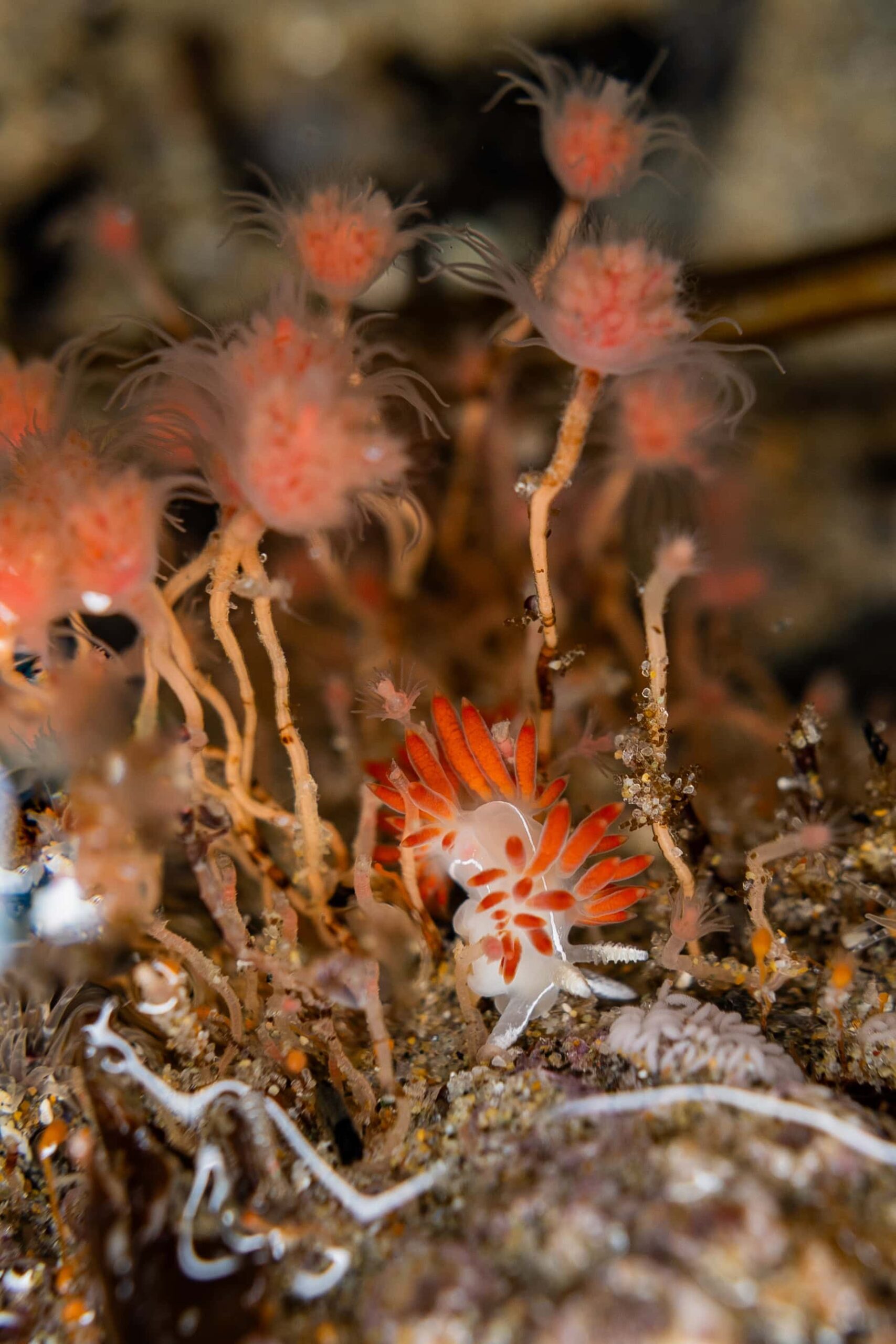
Just like all experiences in nature, there’s important steps we need to take to make sure we’re good stewards of the ecosystem. There’s some unique things to know when it comes to LNT and tide pools:
- Generally, don’t touch things. There’s a lot of nuance on what is okay and not okay to touch in tide pools. Since it takes significant time and research to learn those things, just opt out of touching tide pool things until you know for sure otherwise. For example, starfish seem just fine to touch without harming them. Upon further research, they have had issues with sea star wasting disease in recent years. If you touch an infected starfish and then touch a healthy one, you can spread it.
- There’s a LOT more stuff that’s alive than you think. You’ll find tiny black specks all over the rocks and until you look closer, you’d never know that each one is a small snail. Many walk over these little critters and never know. Barnacles? Definitely alive. That weird colorful splotch on the rock? Also very much alive. Keep your eyes out and do your best to avoid stepping on as much life as possible.
- Leave everything where you found it. Starfish should never be pulled off rocks, leave the crabs in their tide pool, and leave the shell/rock souvenirs behind (many still have life on them in some way). Some critters are even territorial/return to the same tide pool every day so moving them can be problematic.
- Walk on the sand as much as possible. These organisms need rocks to hang onto so walking on sand will help prevent you from accidentally squishing a critter.
We love having resources to back up our info around here so check out this resource from the official Leave No Trace website about how to LNT in tide pools.
Best Places to Tide Pool on the Oregon Coast
The Oregon Coast is 363 miles and it is absolutely packed with tide pool locations. You can’t go more than 30 miles without running into a new environment that can support this colorful ecosystem.
While there’s endless specific locations you can try out for tide pooling, there’s two that I’d recommend above all else:
Cannon Beach and Haystack Rock
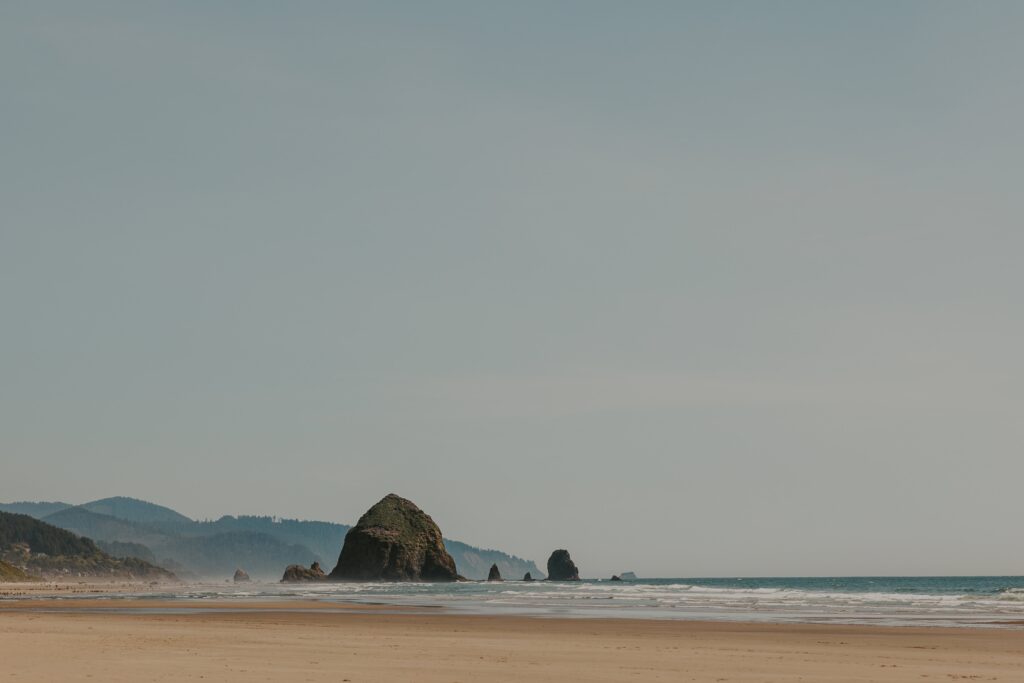
This easy access and popular spot is a perfect place to start your tide pooling experience. You’ll find tide pool ambassadors walking around to tell you what you’re seeing, fun facts, and most importantly, how to enjoy the tide pools while you Leave No Trace.
Yaquina Head Oustanding Natural Area
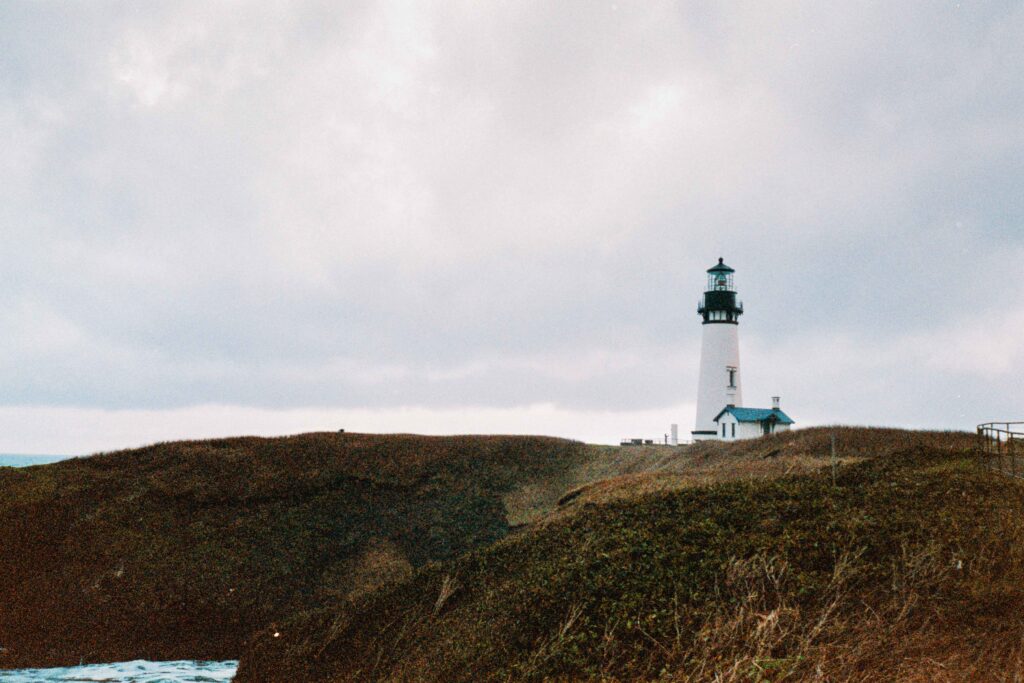
This place is absolutely gorgeous! You’ll get to enjoy the Yaquina Head Lighthouse, bird colonies, and harbor seals before heading down to Pebble Beach to enjoy the tide pool life. It has vastly different species than Cannon Beach due to a different environment. This location has on-staff rangers to answer your questions and guide you on how to be a good steward while you’re at the tide pools. This park does have an open and close time so make sure to check the Bureau of Land Management website before visiting.
Finding Other Tide Pool Locations
After you’ve explored these areas and gotten all the great info the tide pool pros have to share with you, you can start hunting down new locations. Try to look for rocks at the edge of the surf that have consistent water coverage at high tide but are close enough to shore to be exposed at low tide. I recommend looking for large rocks surrounded by sand. This makes it easier to get up close and personal with the wildlife. Long, flat stretches of rock tend to have a lot of wildlife that you’d have to walk on to get to the “good stuff.”
The photo below is an example of the kind of thing to look for. This massive rock is clearly covered by water in high tide but exposed during certain low tides. It’s surrounded by sand which will make it easier to access and you will not hurt other wildlife to get to it.
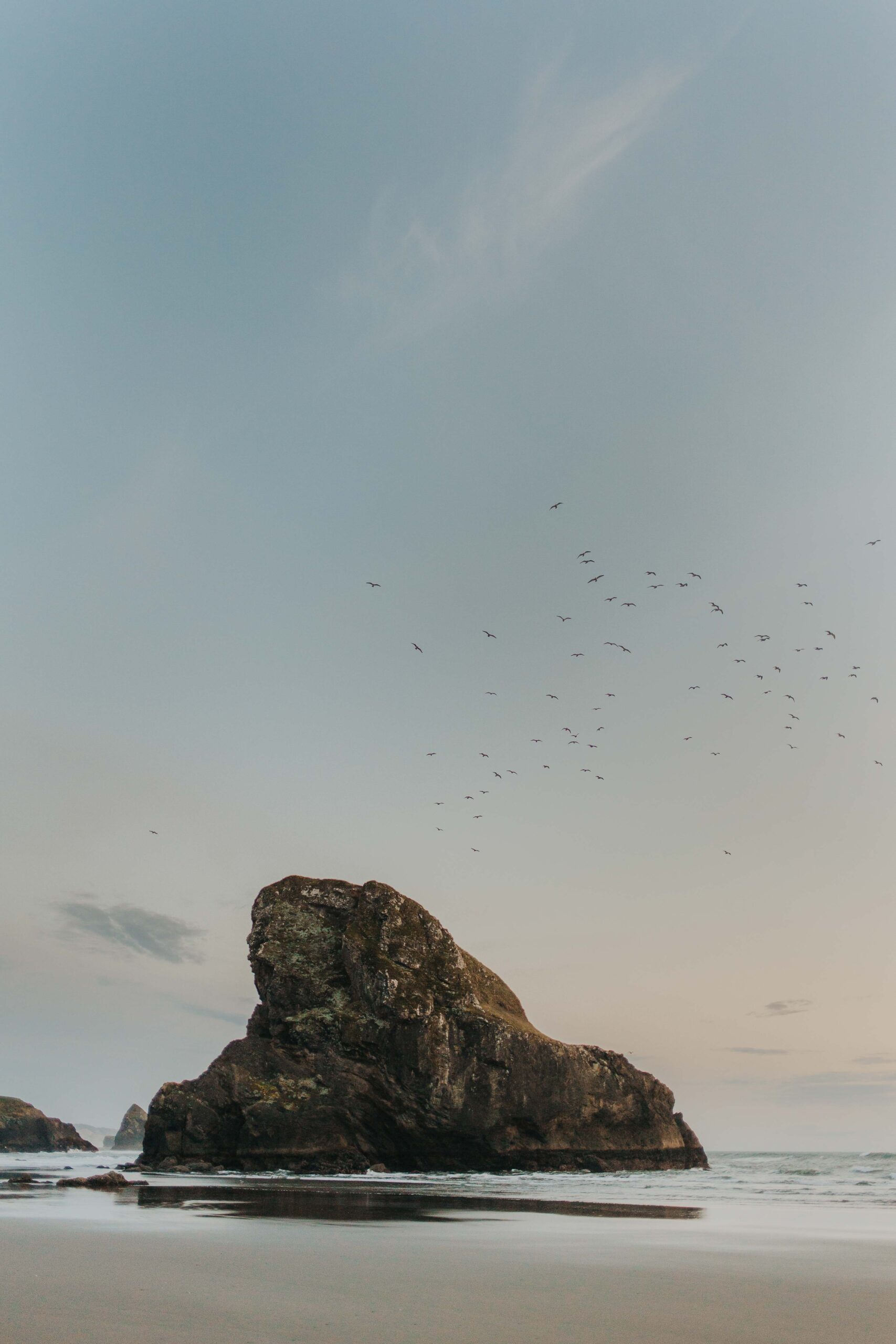
How to Know if the Tide is Good for Tide Pools
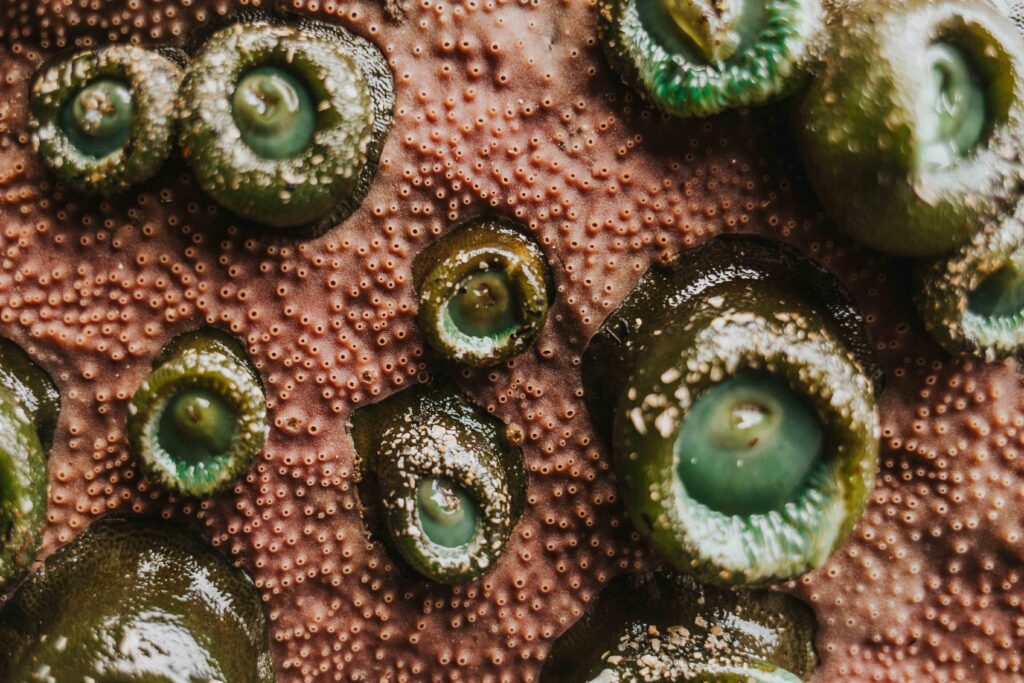
Tides are not as simple as high and low. In general, there are 2 high tide and 2 low tides within a 24 hour period. Even on the same day, the highs and lows are usually different heights. There is a vast range of “high” and “low” tides that will result in very different experiences each time. The time of the high and low tides changes every single day. I’m going to leave it to NOAA to further explain how exactly tides work.
If you want to catch the tides that are going to give you the best tide pools, look for anything with a negative sign in front of the tide height. 0 feet is the average low tide at the given location so anything less than 0 feet means critters to see. The more negative the number, the better the tide pooling. (Pro tip: don’t focus too much on how the height numbers are different between locations. Some tide stations are on the beach, others are in bays, and they all measure the heights based on their own 0 feet average. A -0.5 feet tide according to one station can be just as good as a -1.5 feet at another station simply because of the location they’re measuring from. Places like the Pudget Sound and the islands of Alaska have vastly different tide numbers due to their geography.)
“Good” tides are on both a seasonal and monthly cycle. You’ll find there’s usually a few days in a row each month that have better tides than the rest of the month near the full or new moon. During the winter and summer solstice, you’ll find extra low tides. Summer is best for tide pooling because the waves are more calm and surges are less common. The extra wave movement in the winter time can make even good low tides difficult (and even unsafe).
All of that to say, find a good tide chart and spend some quality time with it. Using the NOAA tide predictions for Oregon is a great place to start. I recommend any tide chart that has a graph structure like the photo below from NOAA’s tide predictions page. These graphs are packed with data to help you find the best tide pool time.
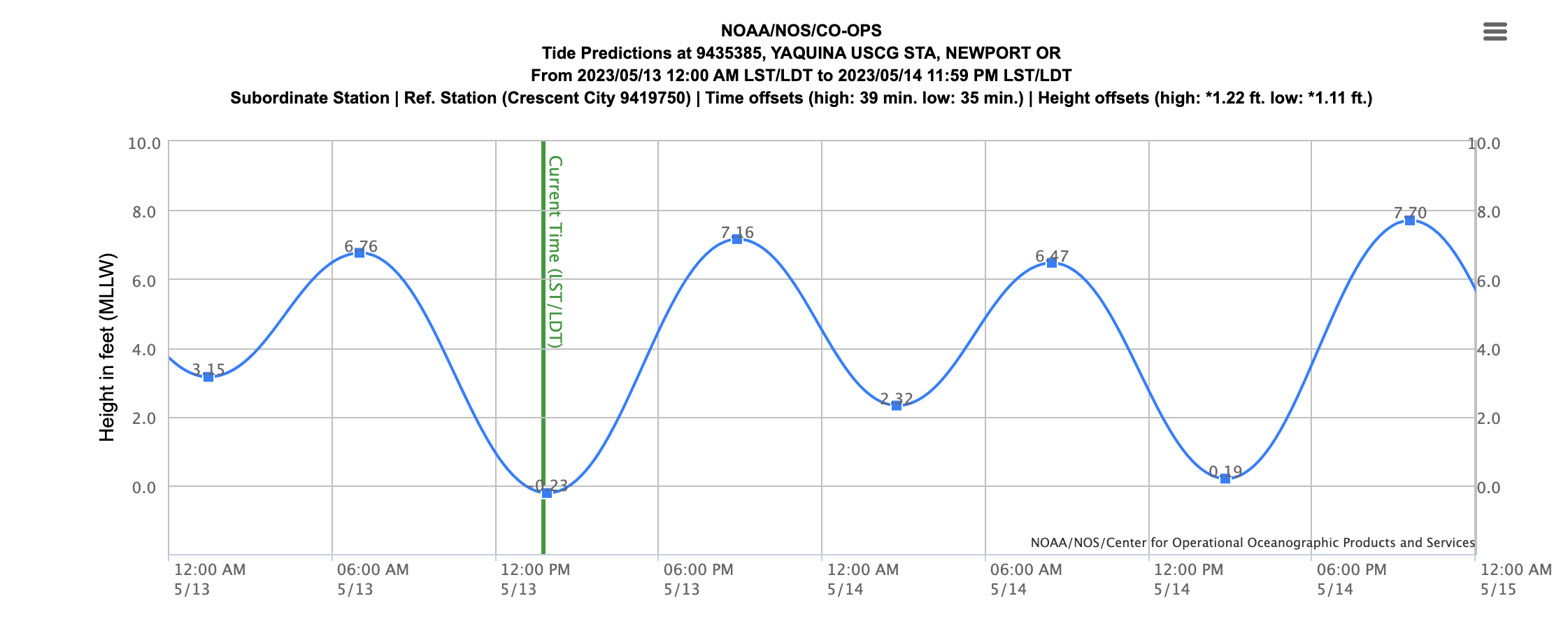
How to ID Tide Pool Life on the Oregon Coast
Even if you’ve been tide pooling before, you’ll be amazed at how many new things you spot when you know they’re there. You’ll be mostly seeing invertebrates (no backbone) which is not a category of animals a lot of people think about. This means you’re looking at critters with vastly different body plans, life cycles, behaviors, and appearances than most animals you are familiar with. Let’s break down some of the main species so you can fully experience what feels like an alien planet.
Starfish
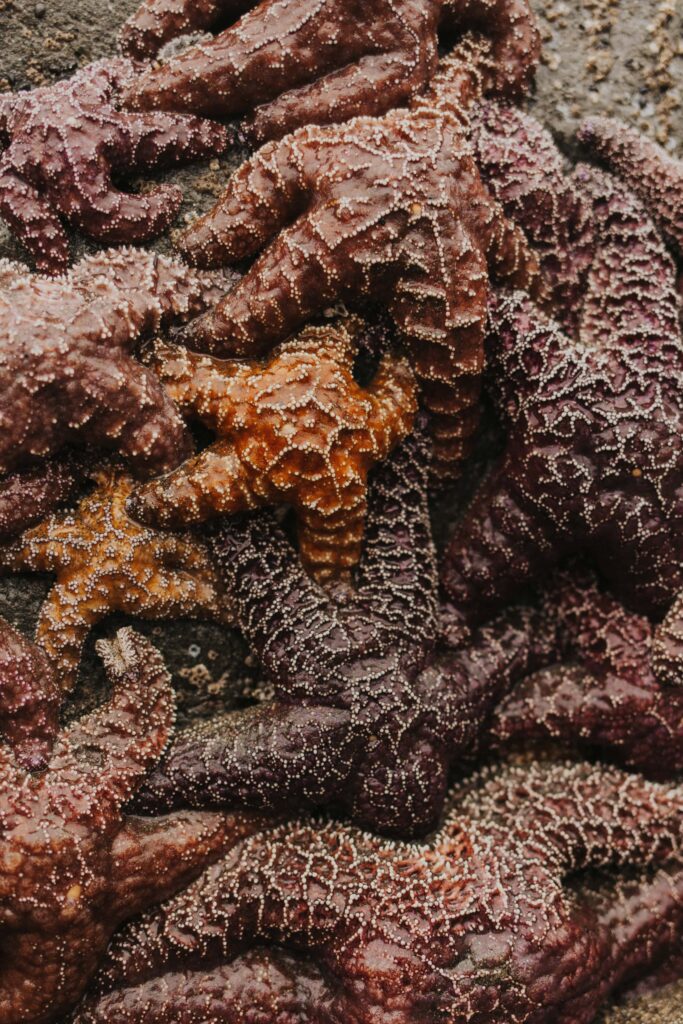
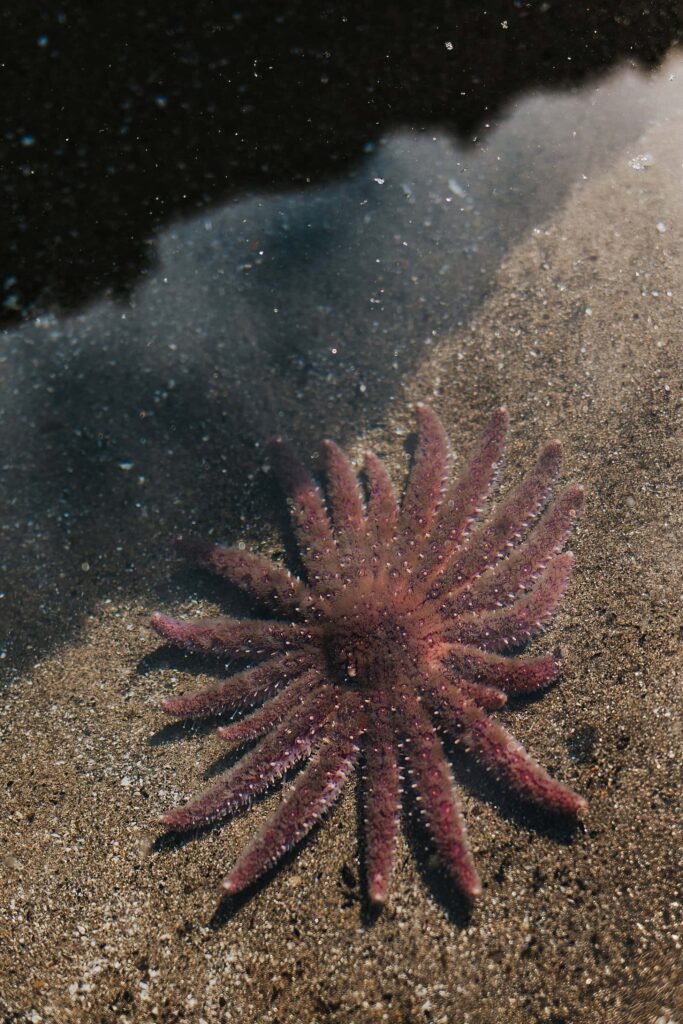
This may be the most iconic critter in the tide pools. You’ll primarily be seeing the ochre sea star which are the bold purple and orange starfish. Some other common starfish are the leather star (featured above), the six-ray star (small starfish that are easily identified because they’re the only ones with 6 legs), and blood stars (aptly named for their bold, red color).
Fun Facts:
- These odd critters are actually hydraulically powered. They bring water into their circulatory system and that powers their ability to move. So when you see them at low tide, they cannot move (so leave them at the beach even if they seem dead). You’ll sometimes find them frozen in the middle of snacking on prey and they won’t be able to move until the tide comes back in.
- Despite their small size, they play a very important role in regulating the entire ecosystem. They were part of important research about keystone species. Since sea otters are extinct in Oregon, starfish have been one of the last things keeping sea urchin populations under control which in turn saves the essential kelp forests (this is why preventing sea star wasting disease, which can spread by touching starfish, is so important). While I can talk about this topic extensively, it is quite complex. This video is a great look into keystone species and how starfish are essential to the ecosystem. If you want to dive more into the big picture of starfish ecological impact which actually leads to otters, check out the book Return of the Sea Otter by Todd McLeish.
- Starfish can eat things much larger than them because they put their stomach outside their body and digest their food externally.
- Starfish are able to regrow lost limbs. If you’re lucky and observant, sometimes you’ll see a starfish in the process of regrowing its limb. On occasion, they can even regrow from a single limb.
Anemones
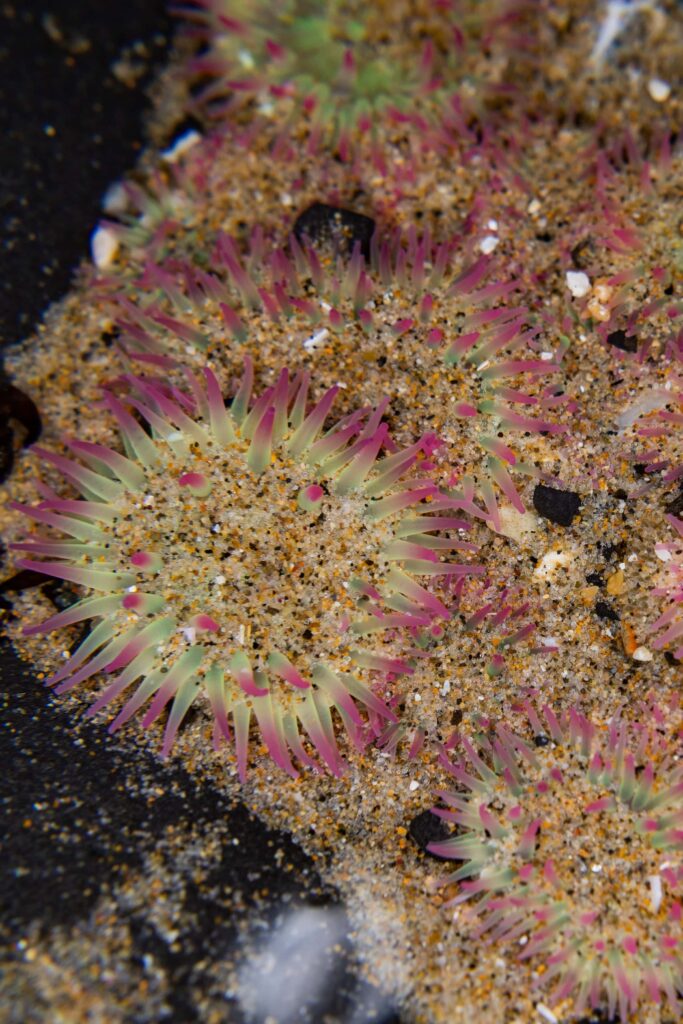
Another crowd favorite is the striking green anemones that fill tide pools. When on the hunt for them, keep an eye out for the closed ones too. Their tentacles are filled with stinging cells that have a neurotoxin. When an unsuspecting prey touches a tentacle, it shoots the paralyzing toxin into the organism. While they mostly eat crabs, fish, and other standard things, they have sometimes been found with bird skeletons in their stomach. If it reaches them, they’re happy to eat it. Thankfully, their neurotoxin doesn’t pose any danger for humans.
You’re most likely to see giant green anenomes and aggregating anenomes. They look somewhat similar. The best way to tell the difference between them is by looking at the other anenomes around them. Aggregating anenomes are named as such because they tend to reproduce asexually to create massive groups of clones. They simply split themselves in half and make another anenome. If you see a large group of very close anenomes, you’re probably looking at aggregating anenomes. Giant green anenomes, on the otherhand, reproduce differently. They’re usually quite a bit larger and usually spaced out across the rock.
Fun facts:
- The neurotoxin found in anenomes is found to have beneficial medicinal properties and is found in some heart stimulants.
- Aggregating anenomes and their clone armies could honestly be turned into a sci-fi movie. If you look closely, you’ll notice that there’s “border” lines between colonies of aggregating anemones (shown in the photo below). Each colony is a grouping of genetically identical clones. The space between those colonies signifies where another genetically identical set of clones start. They are very territorial and even have specialized tentacles used to attack anemones that aren’t its genetic clone. Some clones are sentries and will scout where their clone group can expand into.
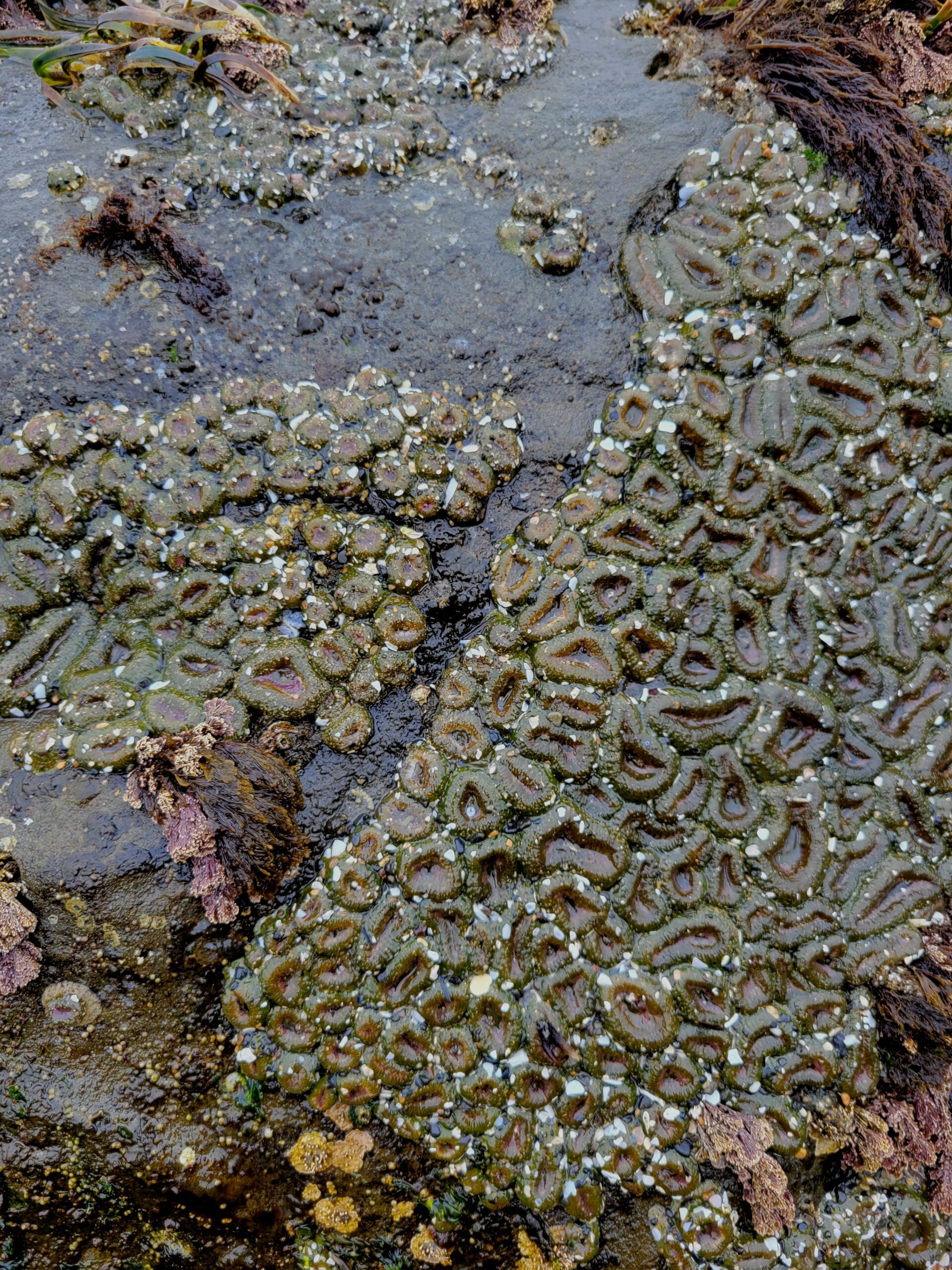
Chiton
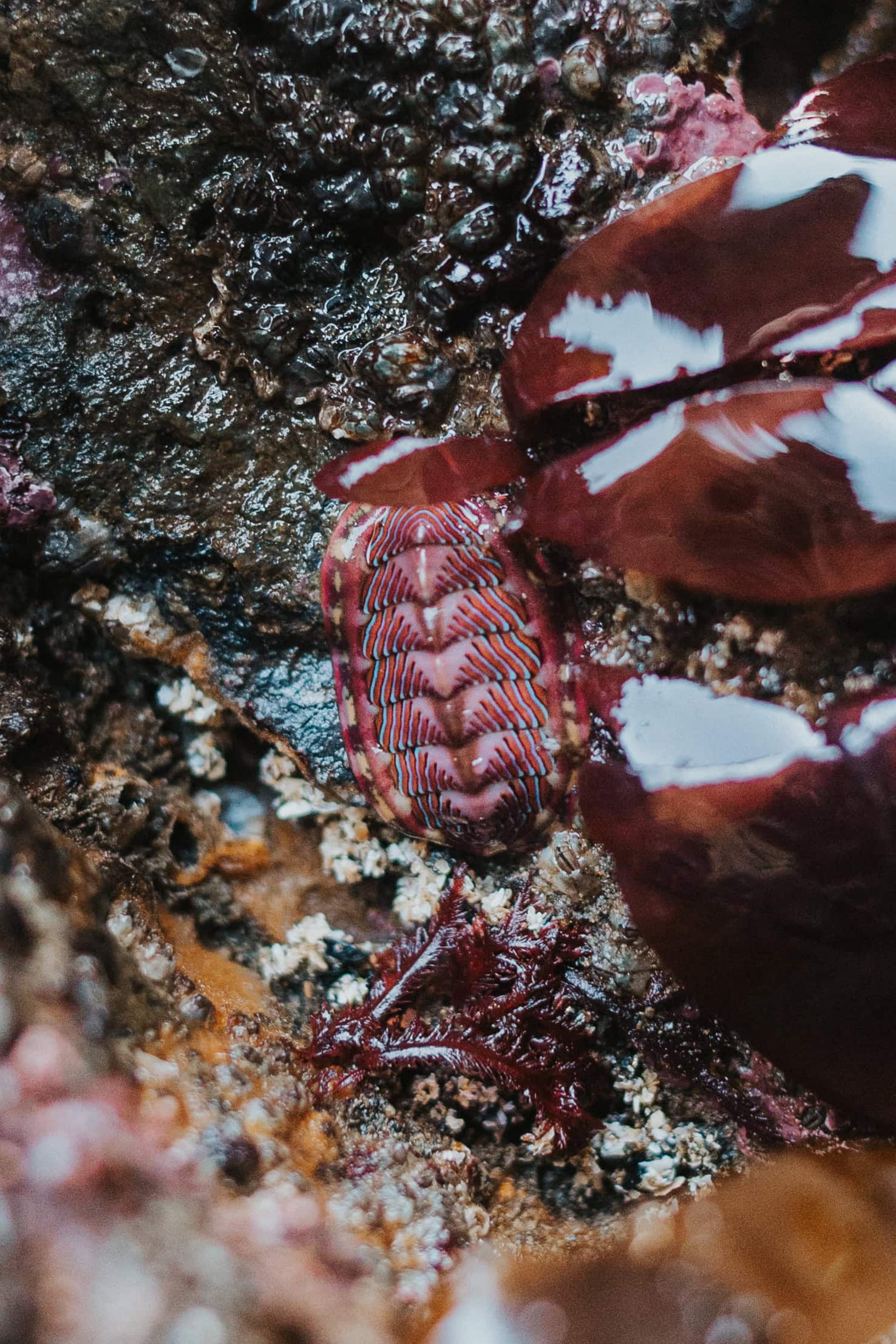
This is an often under-appreciated but fascinating animal to find on the coast. There’s a lot of variety you can find from the lined chiton (my personal favorite and known for its vibrant colors) to the black katy chiton (that looks like black leather) to the gumboot chiton (also known as the wandering meatloaf). They’re distinct because of their stacked bone plates (which you can occasionally find on the beach) which allow them to bend unlike many other shelled animals.
Nudibranch
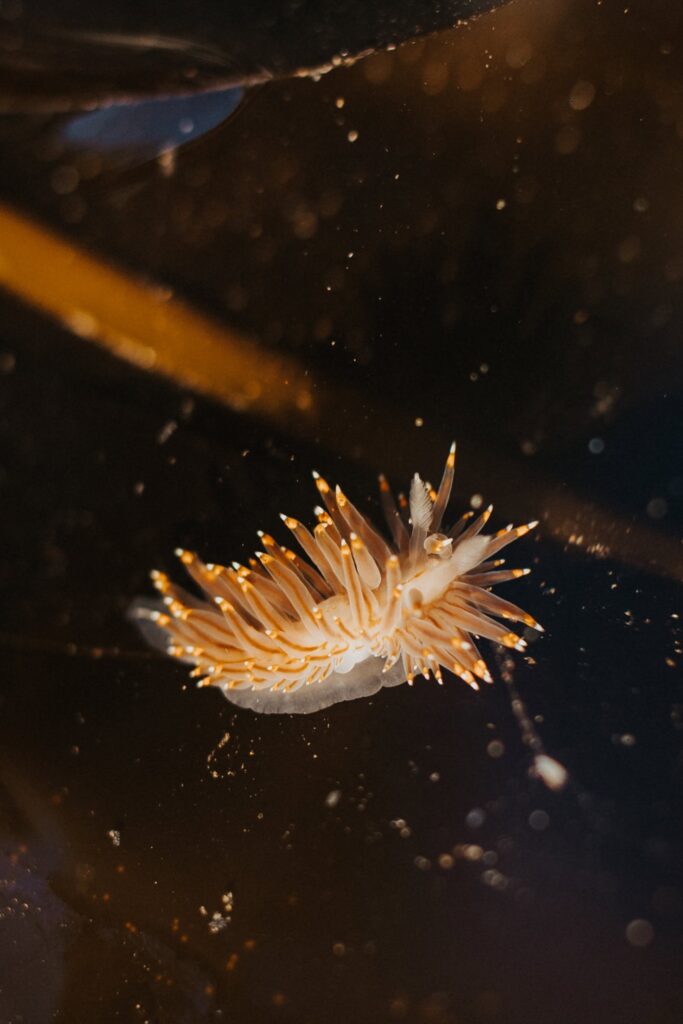
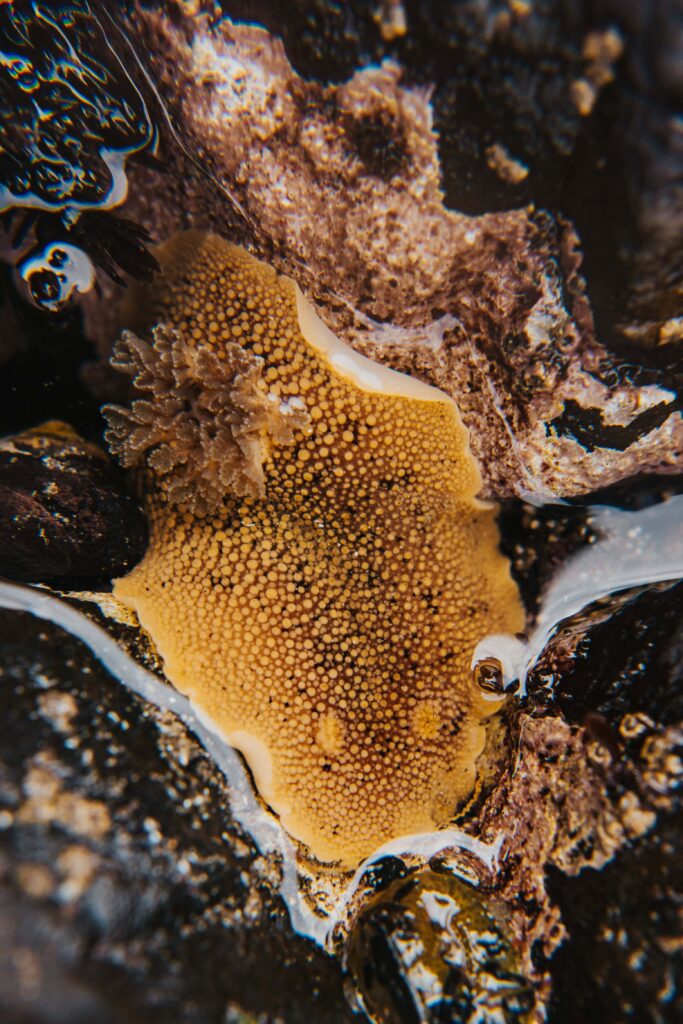
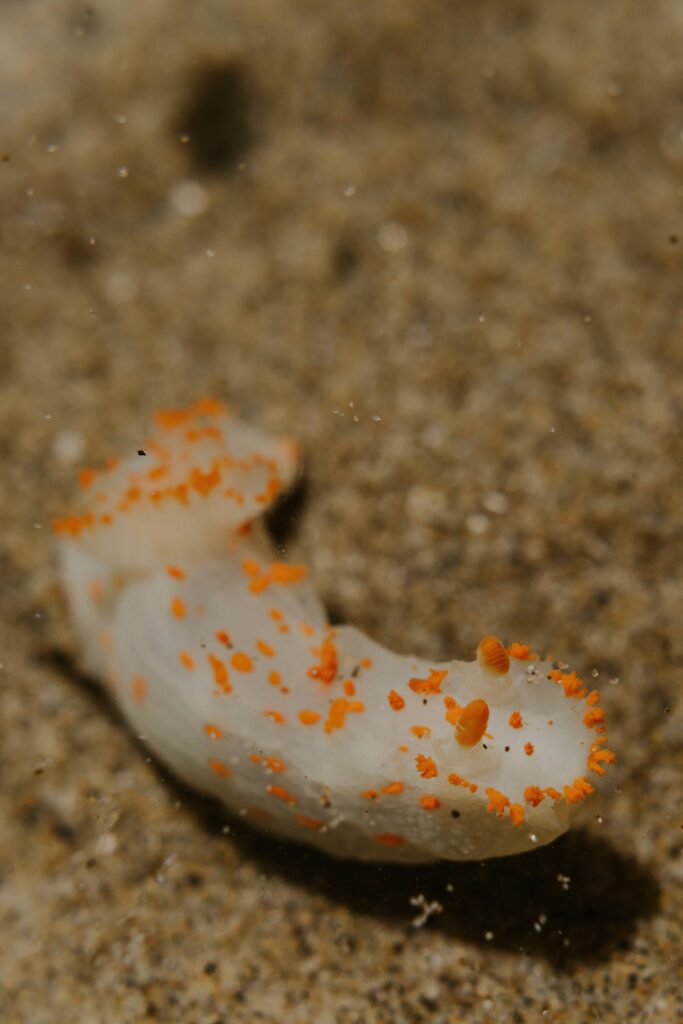
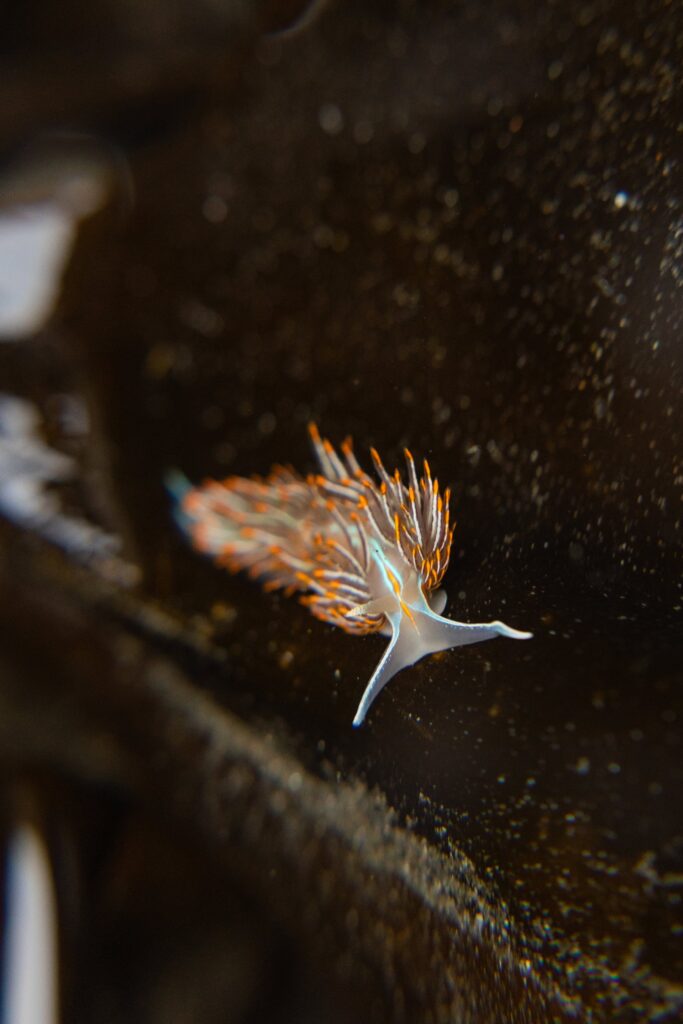
These are the hidden gems of tide pools. They’re wildly colorful and some are very elaborate…and they’re SO small. Some are the size of your pinky nail and others are the size of a silver dollar. It makes them quite challenging to find which is why many tide pool enthusiasts are always trying to spot one.
Depending on where and what kind you see, you may see a very impressive animal or an odd blob. They’re far more impressive in the water than out. If you’re confused on if the blob is a coral/plant/other odd blob critters versus a nudibranch, look for two spots on one end and a flower like circle on the other end. The two spots side by side are their rhinophores and the flower like shape is its gills.
Crabs
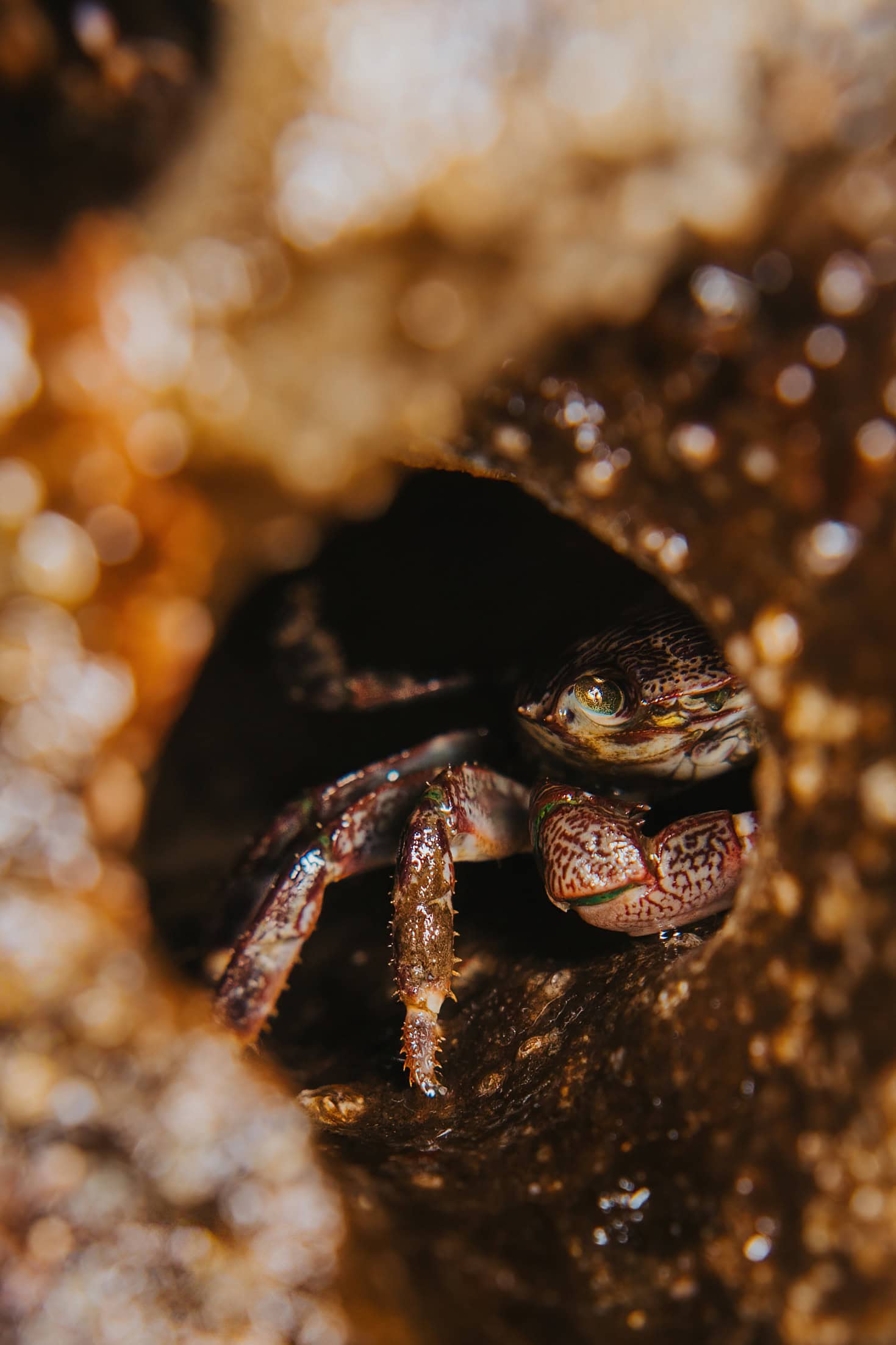
If you look carefully in little caves and tunnels, you’ll find crabs everywhere. It’s usually easiest to find purple shore crabs (like the one pictured below). You’ll also often see granular claw crabs, which you’ll know when you just see one oversized claw in a rock hole. On occasion you’ll find Dungeness crab which I’ve seen in tide pools breeding (like other crab species, they will carry a female around until she molts, sometimes for days at a time).
How to Stay Safe While Tide Pooling on the Oregon Coast
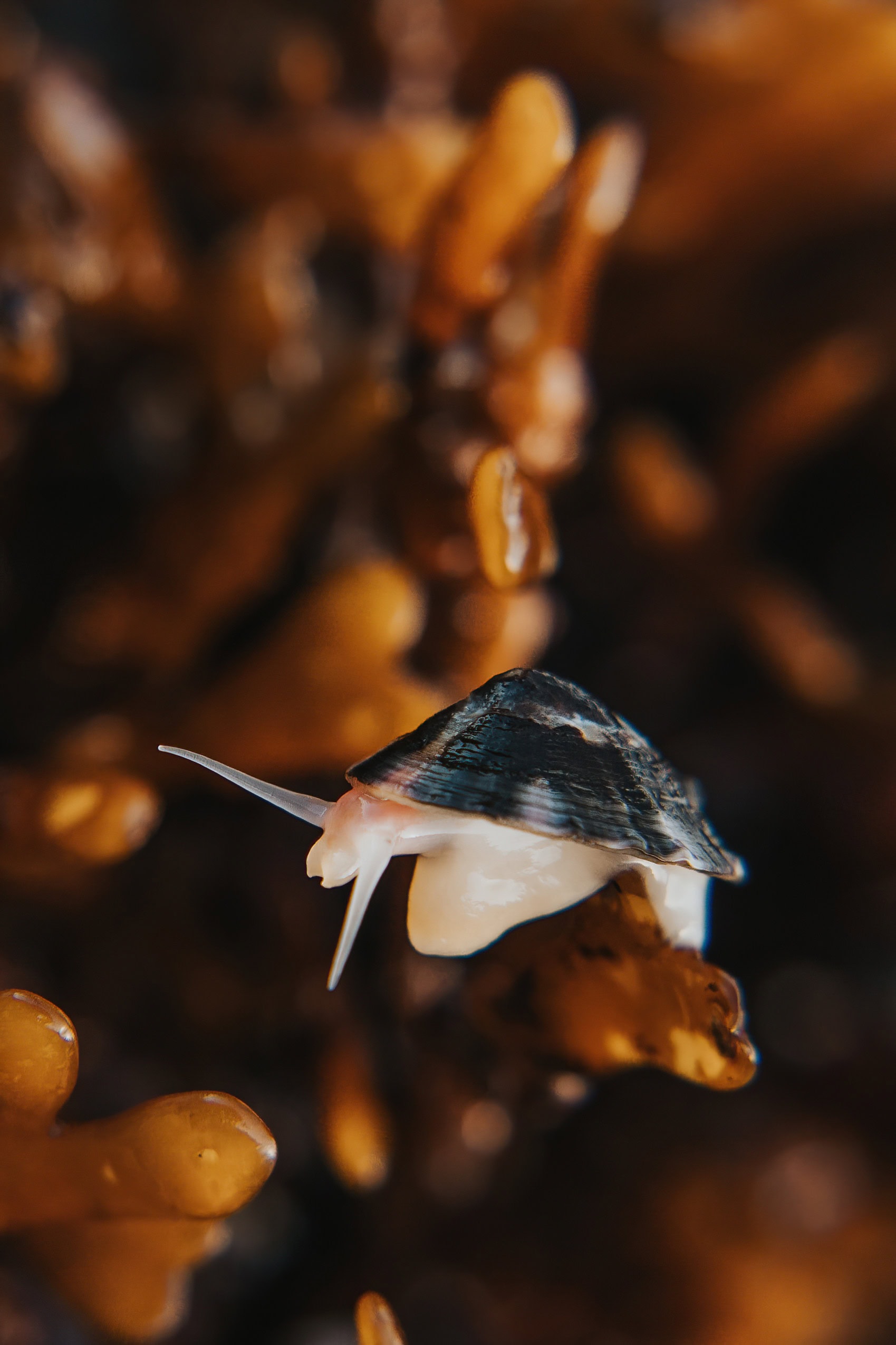
Hanging out at the edge of the ocean requires extra precaution to be safe. Generally the best critters are close to the water so you’ll find yourself in the surf sometimes. Here’s some tips to keep you safe:
- Always keep an eye on the waves. There will occasionally be a surge that brings the water up extra high, very quickly. This happens more frequently in the wintertime so be especially careful when winter tide pooling.
- Keep in mind what the tides are doing. I generally visit tide pools 45 minutes before the lowest point to try to maximize the low tide time. Others recommend arriving 1 hour or so prior to the low tide. I like to keep an app on my phone so I can see when the tide turns and starts coming in. This is especially important if you’re exploring somewhere that becomes inaccessible when the tide comes in like a cave.
- Make sure to wear proper footwear. I personally opt for rubber boots when I got tide pooling, even in the summer. They protect your feet from sharp rocks/barnacles as well as ensuring you don’t step on a critter (looking at you jellyfish) that will hurt you. Make sure to have good tread as some rocks can be very slippery.
Tools for Tide Pooling
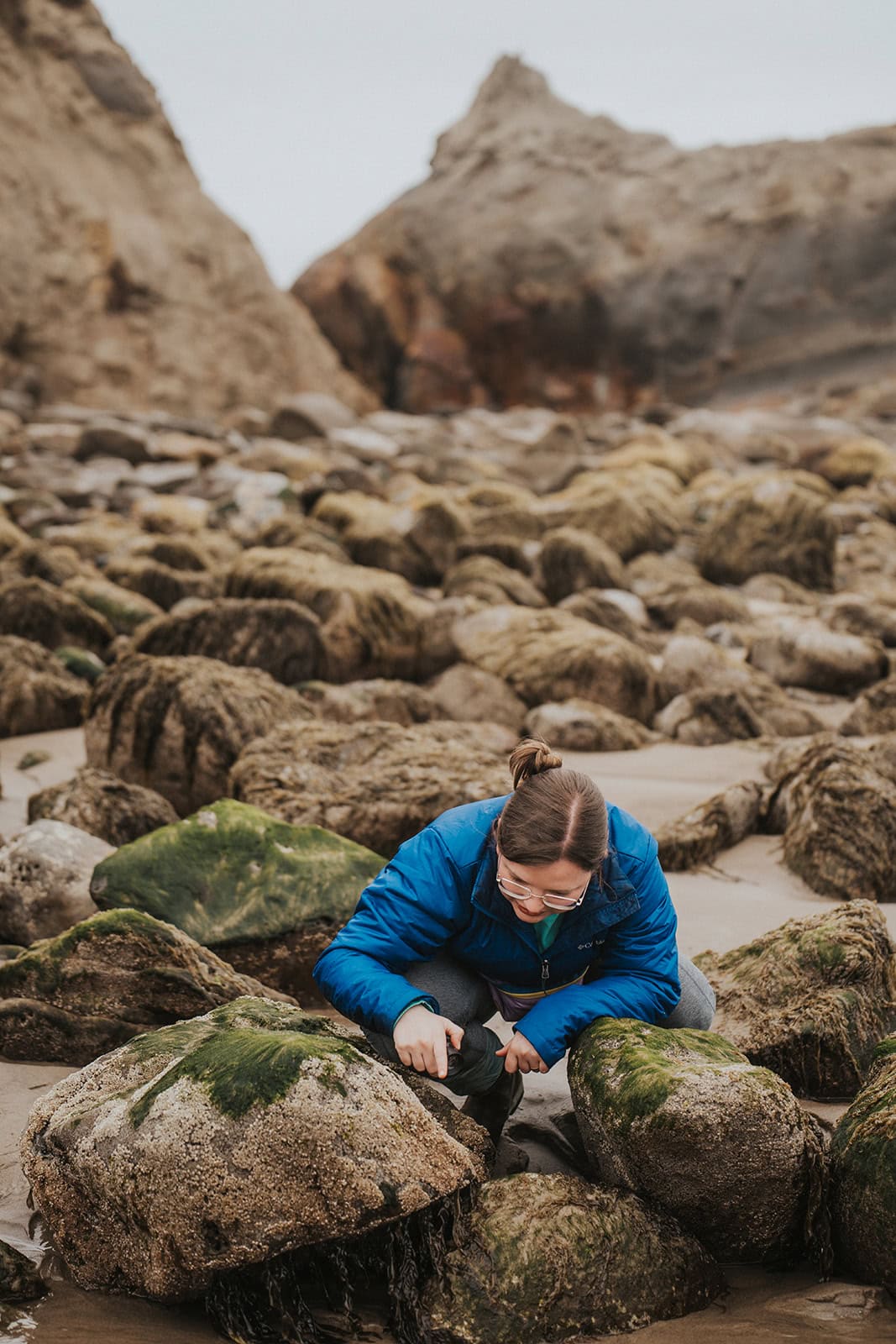
For just a short exploration, all you need is some curiosity and some shoes you don’t mind getting wet. If you end up like me, crawling around in the sand to find every little creature possible during every decent low tide, these are my favorite items I just can’t live without.
- Tide pool guide: I’m quite particular when it comes to my field guides. This guide is perfect for anyone tide pooling in Oregon, Washington, California, or even Alaska. You’re going to want this location specific guide. The generic guides that cover “all fish in the US” or “seashore life of the US” will be missing most of the species you’ll be identifying.
- XtraTuf boots: I’ve been through a lot of rubber boots. When you crouch repeatedly, seams form and rip pretty quickly. These are the only boots that have survived the rigors of regular tide pooling. I use the tall, brown boots specifically.
- Lupe: This is like having a microscope in your pocket. It will show you the world in ways you’ve never seen it before. Make sure to exercise caution while using it so you don’t accidentally smoosh things while looking at a critter. This is also an amazing tool for looking at plants and rocks as well.
- Macro filters for any camera lens: For my fellow photographers, this is my favorite way to capture the tiny world of tide pools. Macro lenses can get quite pricey and these low cost lens filters are a great way to achieve the same effect for the hobby level.
- Local Facebook Group: IDing strange critters can be hard and discouraging. Finding a good Facebook group for your local area can help you ID those tough species. This is the group I turn to when I’m stumped on one of my recent finds. This is also a great place to see what others are finding and where to fuel your own enjoyment of tide pooling.
- Read more on tide pools: If you want to curl up on the couch with a good chapter book about tide pools when the tides aren’t good, you’ll want to check out The Edge of the Sea by Rachel Carson and Life Between the Tides by Adam Nicolson.
About Venturing Vows

Hi there! I’m Miki (the one who wrote this) and I’m an elopement photographer specializing in the Oregon Coast. The couples I work with opt for a non-traditional, epic wedding days usually with just the two of them (and yes, we regularly include tide pooling in their day). If you love the Oregon Coast and a traditional wedding just doesn’t feel right to you, check out these other resources (you might just find the wedding of your dreams).
Everything You Need to Know About Eloping on the Oregon Coast
Answers to All Your Questions About Eloping
The Best Places to Elope in the Pacific Northwest
Save this on Pinterest for later!
